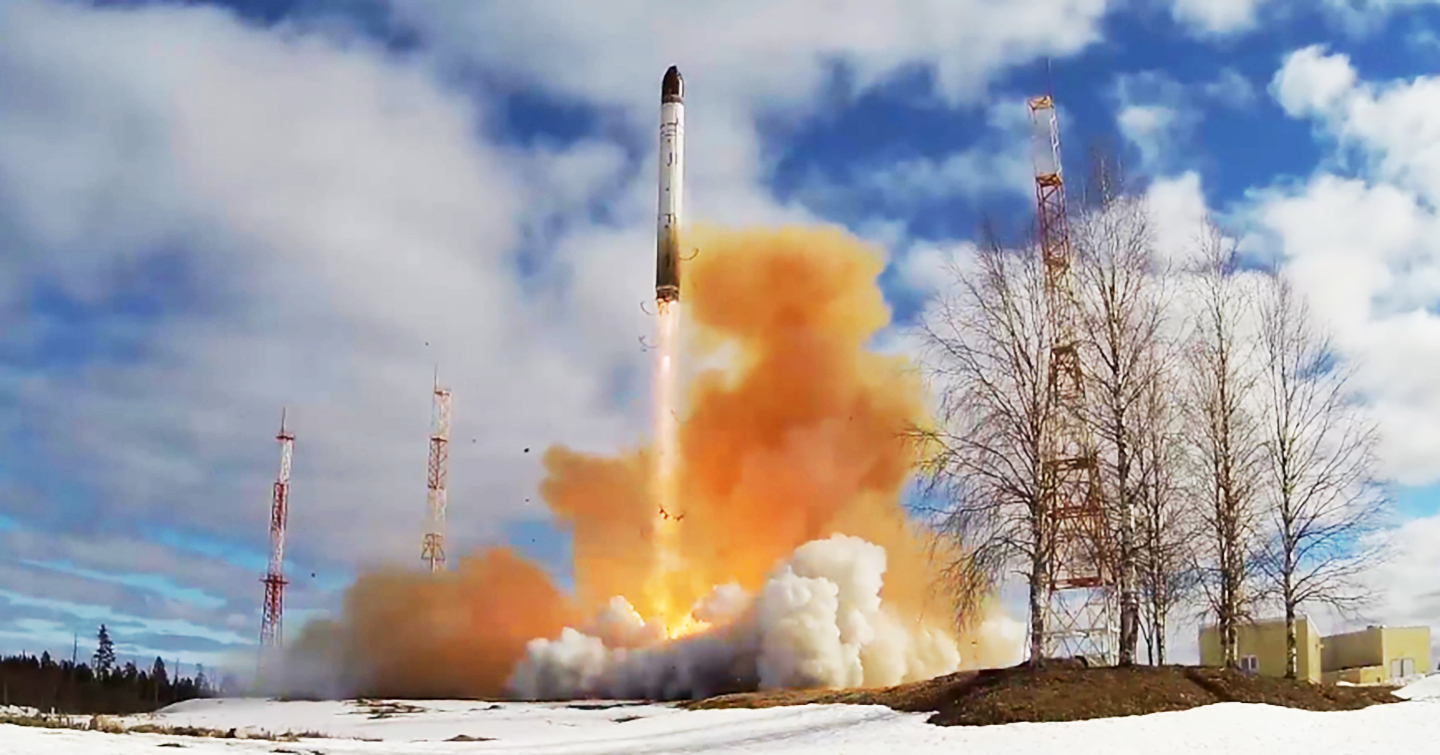Russia carried out a test of an intercontinental ballistic missile that appears to have failed while President Joe Biden was in Ukraine on Monday, CNN reported, citing two U.S. officials familiar with the matter.
Russia notified the United States in advance of the launch through deconfliction lines, one official told CNN. Another said that the test did not pose a risk to the United States and that the U.S. did not view the test as an anomaly or an escalation.
The test of the heavy Sarmat missile – nicknamed the Satan II in the West and capable of delivering multiple nuclear warheads over great distances – appears to have failed, officials said. It has been successfully tested before and had this one worked, U.S. officials believe Russian President Vladimir Putin would have highlighted it in his speech Tuesday. Regardless, the timing — whether planned or otherwise — of the test launch and the message it would have sent would have been ominous.
Word of the Sarmat failure began to circulate on Feb. 20 by researcher Pavel Podvig, citing unofficial information that has seemingly been confirmed now by CNN.
You can read more about the Sarmat missile in our deep dive here.
Before we head into the latest news from Ukraine, The War Zone readers can get caught up on our previous rolling coverage here.
The Latest
During his long, blusterous and convoluted speech to the Russian Federal Assembly ahead of the first anniversary of his all-out war on Ukraine, Vladimir Putin announced his nation’s suspension from the New START Treaty, the last remaining nuclear arms deal with the U.S.
But he also blamed the West for forcing him to launch a full-on invasion of Ukraine. And he gave some hints that there is no planned end in sight for his so-called ‘Special Military Operation’ there.
For one thing, he appears to have a protracted plan to create leave for troops.

Everyone, said Putin, “understands that serving in the special military operation zone causes immense physical and mental stress, since people risk their lives and health every day. For this reason, I believe that the mobilized conscripts, as well as all service personnel, and all those taking part in the special military operation, including volunteers, must benefit from a leave of absence of at least 14 days every six months without counting the time it takes them to travel to their destination. This way, every fighter will be able to meet family and spend time with their loved ones.”
And his five-year plan for the Russian Armed Forces is based in large part on the experience gained by troops in Ukraine.
“Colleagues, as you are aware, a 2021–2025 plan for building and developing the Armed Forces was approved by a Presidential Executive Order and is being implemented and adjusted as necessary,” he said. “Importantly, our next steps to reinforce the Army and the Navy and to secure the current and future development of the Armed Forces must be based on actual combat experience gained during the special military operation, which is extremely important, I would even say absolutely invaluable to us.”
He also talked about improving his defense industrial base and the weapons provided to troops. To date, Russia has lost nearly 10,000 vehicles and weapons systems, including tanks, infantry fighting vehicles, radar systems, electronic warfare equipment and much more, according to the Oryxspioenkop OSINT group. This number includes just visually confirmed losses, the actual total amount is likely significantly higher.
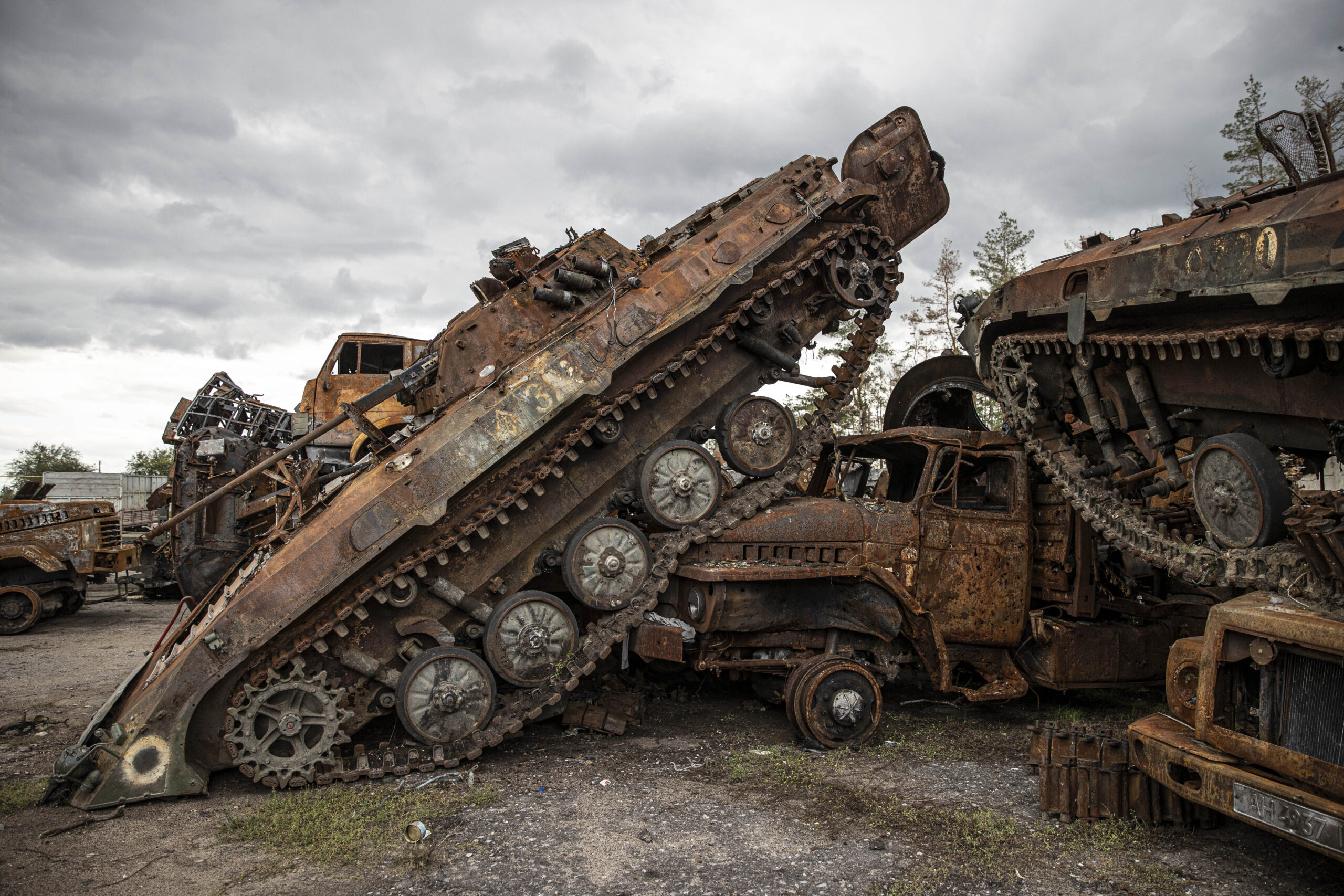
“We will widely introduce the latest technology to ensure high-quality standards in the Army and Navy,” he said. “We have corresponding pilot projects and samples of weapons and equipment in each area. Many of them are significantly superior to their foreign counterparts. Our goal is to start mass production. This work is underway and is picking up pace. Importantly, this relies on domestic research and the industrial base and involves small- and medium-sized high-tech businesses in implementation of the state defense order.”
Shortly after Putin wrapped his speech, Russian forces shelled Kherson City again, killing at least six civilians.
In Poland, meanwhile, Biden gave a speech of his own after Putin’s.
There was no announcement of new weapons for Ukraine, but he did predict that Putin won’t be successful.
“Ukraine will never be a victory for Russia,” he said. “Never.”
Putin honored a unit – the 53rd Anti-Aircraft Missile Brigade – that the Joint International Criminal Investigation Team MH17 determined provided the missile used to shoot down a civilian airliner in 2014.
Though Ukraine says there is no indication of a looming attack through Belarus, it still launched a large training exercise in the north – called Oxymoron-2023 – that includes preparing to protect against another incursion through the Chernobyl Exclusion Zone.
“In the Northern Operational Zone, operational-tactical training on the protection and defense of particularly important state objects of critical infrastructure during the conduct of hostilities is ongoing,” according to the Command of the Combined Forces of the Armed Forces of Ukraine. The training focused on “tactical and special training of the Defense Forces of Ukraine on the defense of the exclusion zone of the Chernobyl nuclear power plant,” the command said Tuesday.
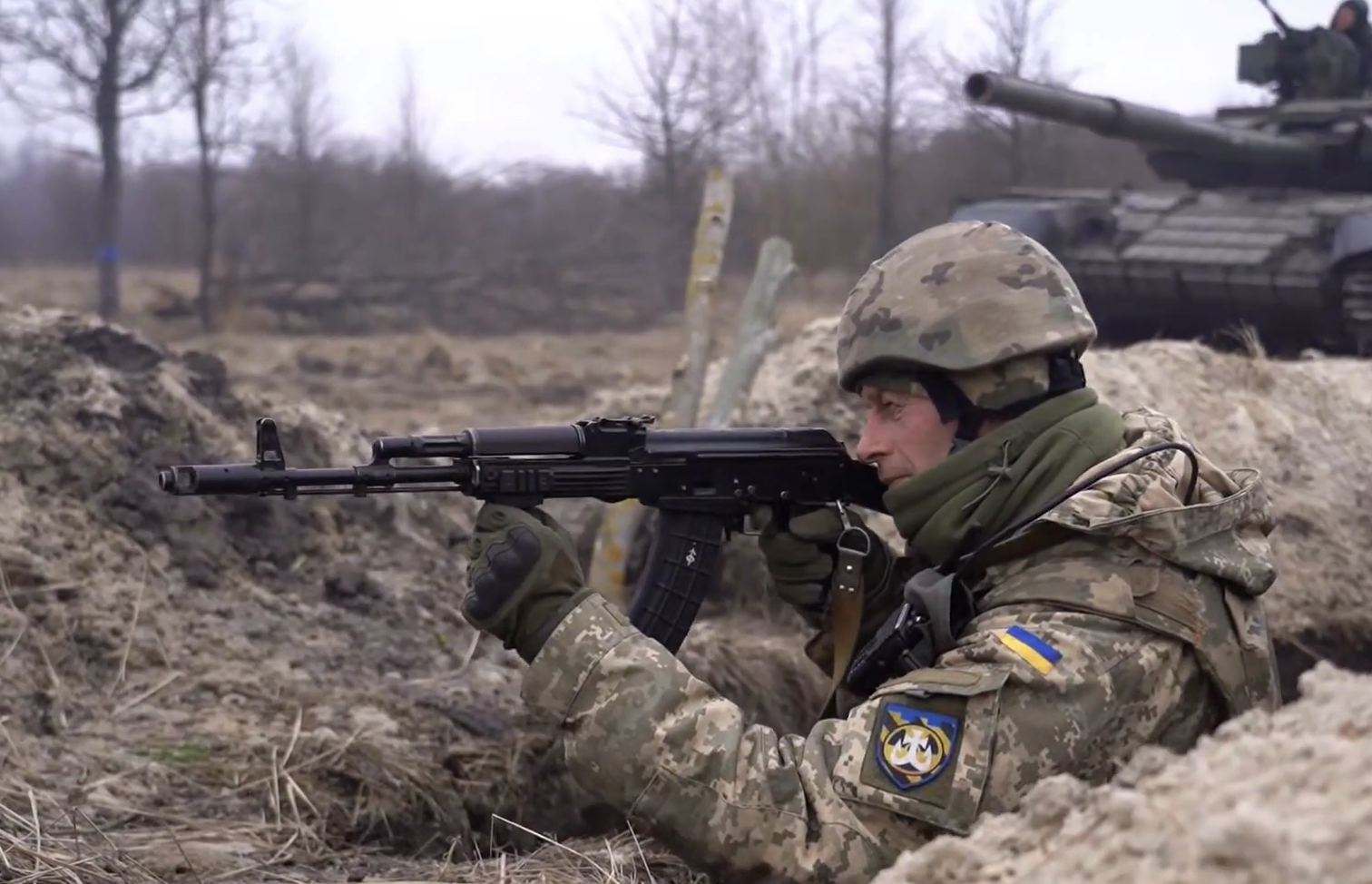
The now-shuttered Chernobyl Nuclear Power Plant (CNPP) was captured on the first day of Russia’s full-on invasion and held for several months after Russian troops rolled south through Belarus as part of their doomed northern offensive.
In April, drone video footage emerged that the Ukrainian military said at the time showed evidence supporting previous claims that Russian forces dug trenches and other fighting positions in the so-called Red Forest surrounding CNPP. You can read more about that here.
The Russian occupation of the plant, the site of the world’s worst nuclear power plant disaster where massive amounts of radioactive materials are still stored, “was really, really, scary because it was obvious they were not following the rules for visiting the exclusion zone,” Olena Pareniuk, a senior researcher for Ukraine’s Institute for Safety Problems of Nuclear Power Plants, told us in April.
Russian troops were not wearing protective gear to prevent contamination from radioactive dust. The trucks and tanks and other vehicles they drove through the exclusion zone kicked up so much of the contaminated dust “that our detectors were actually detecting the increase of the dose rate and it was because the Russian machines were lifting up the radioactive dust,” said Pareniuk.
Most of the exclusion zone is safe, however, and Ukrainian troops trained there shortly before Russia launched its all-out invasion.
A YouTube video shows troops practicing on a range of weapons, including maneuver training with tanks.

It’s part of a permanent training process, according to the command.
Initially, troops train separately as part of their units.
“After a certain period, joint training and exercises take place, during which servicemen hone their skills in conditions close to combat,” according to the command.
“Commanders and staffs foresee troop maneuvers and other military measures in order to respond to possible enemy actions at any time,” said Ukrainian Lt. Gen. Serhiy Naev.

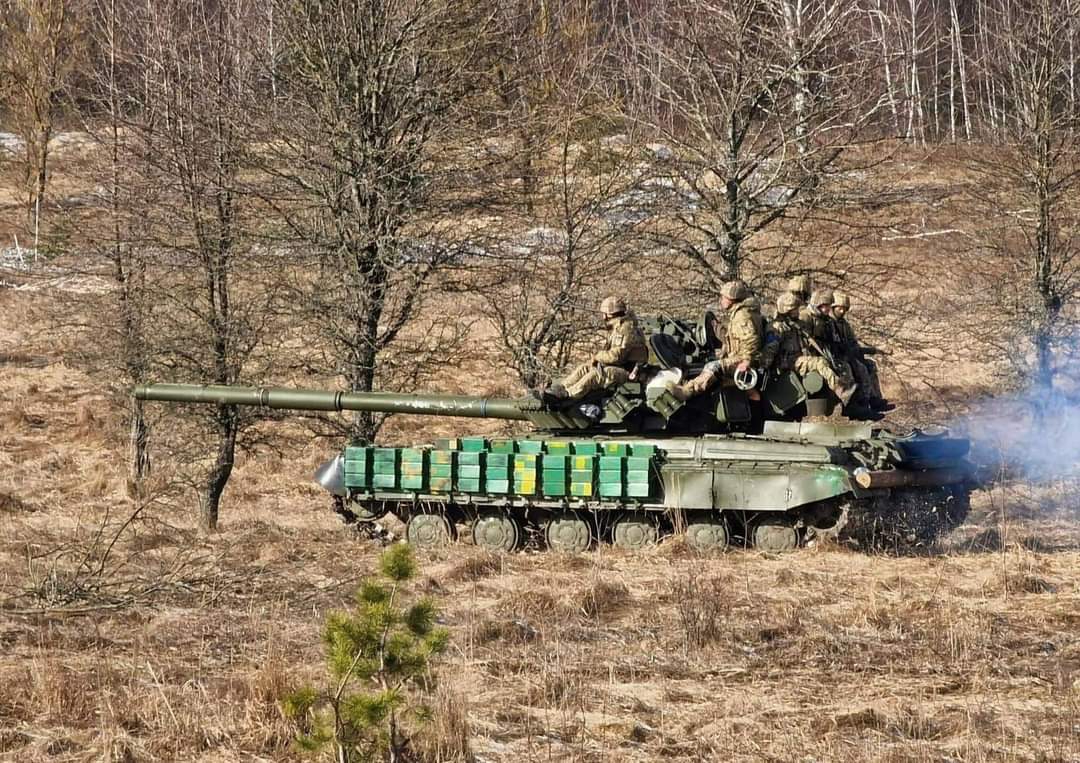
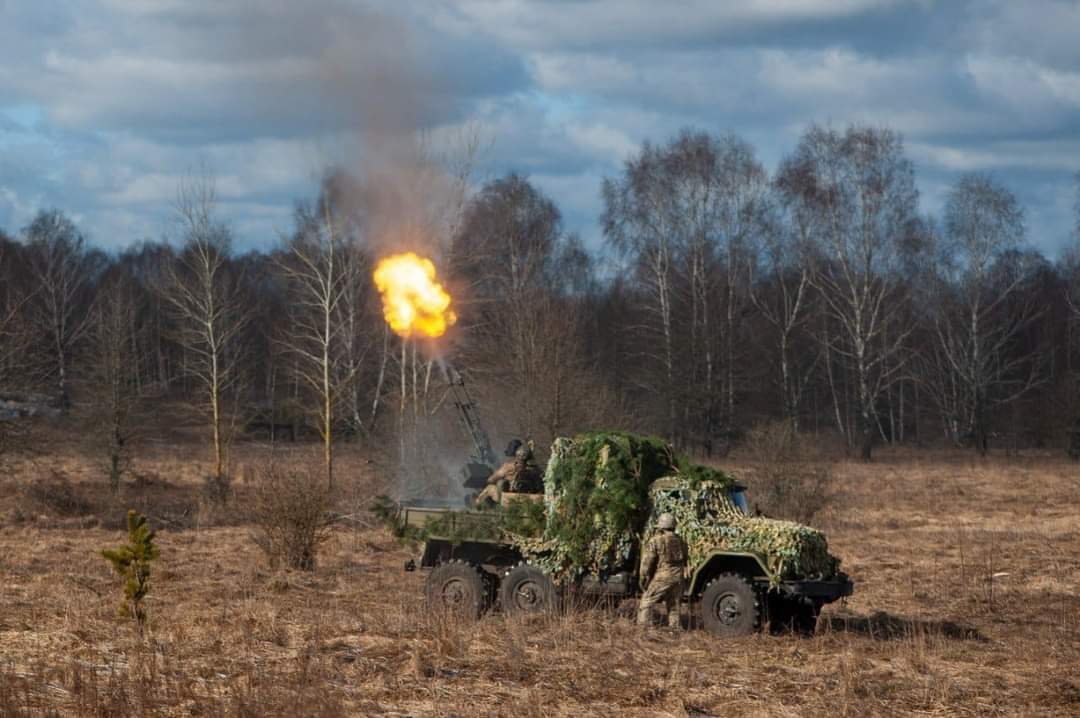
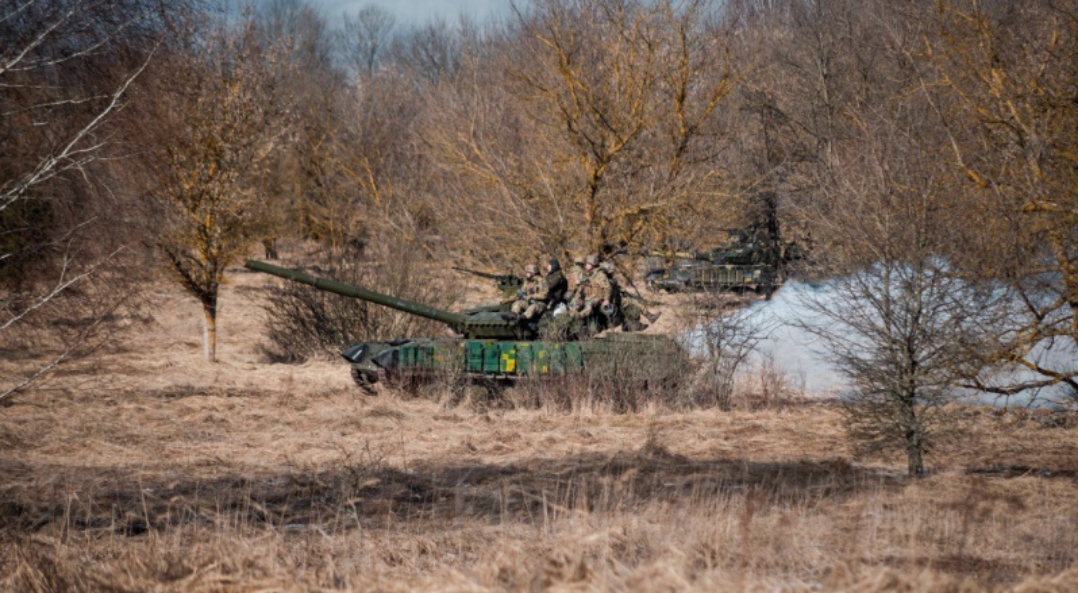

Naev downplayed any current threat from Belarus.
“Currently the threat from the north against Ukraine is minimal,” he said. “In addition, a number of complexes and measures have been implemented that make it impossible for enemy forces to cross the border.”
Ukrainian defense forces “are constantly taking measures to strengthen the state border of Ukraine in the direction of Kyiv,” Naev said. “In particular, appropriate barricades are being arranged and formed to ensure the impassibility of enemy forces in this direction.”
On the battlefield, little has changed over the past 24 hours, with even the pro-Russian Rybar Telegram channel acknowledging that the embattled city of Bakhmut, the Donetsk Oblast coal mining town situated along key roads and rail lines, is still largely in Ukrainian hands.
Here are some key takeaways from the latest Institute for the Study of War assessment:
- Russian forces continued ground assaults along the Svatove-Kreminna line in the Luhansk Oblast.
- Russian forces continued offensive operations around Bakhmut as well as in the Avdiivka-Donetsk City area and western Donetsk Oblast.
- Ukrainian officials reported that Russian forces may be struggling to repair air defense systems deployed in Ukraine.
Speaking of Rybar, it claims (without providing proof or saying how they know) that “at least one” Ukrainian M142 High Mobility Artillery Rocket Systems, or HIMARS crew “arrived in Bogatyr, which received” the Ground Launched Small Diameter Bomb (GLSDB).
That claim about the weapons being deployed in that Donetsk Oblast city, or anywhere else in Ukraine, could not be independently verified. As it sits at this time, we have seen no indications GLSDB has arrived in Ukraine, but details regarding its acquisition and eventual deployment have been very limited.
“As with any [U.S. Security Assistance Initiative] announcement, it will take several weeks to months to procure, depending on the contracting, production, and delivery timelines for each piece of equipment,” Marine Lt. Col. Garron Garn, a Pentagon spokesman, told The War Zone Tuesday in response to whether any GLSDBs have been delivered to Ukraine. “Additionally, we will leave it to the Ukrainians to announce the use of the security [aid] provided in order to maintain an advantage on the battlefield.”

The Ukrainians have not announced the arrival, let alone the deployment of those weapons, which were officially promised to Kyiv on Feb. 3.
The weapon was developed by Boeing in partnership with Saab of Sweden as a combination of two existing systems. Each GLSDB round is made up of the air-launched 250-pound GBU-39/B SDB, while the rocket motor is from the 227mm-caliber M26 artillery rocket which are fired by the HIMARS as well as the M270 MLRS. You can read more about it in our reporting here. With a range of around 94 miles, or 150 kilometers, the GLSDB can reach targets more than twice as far away as the munitions fired by the HIMARS and M270.
Speaking of HIMARS, the Russians have made repeated false claims that they’ve destroyed the entire HIMARS fleet several times over, without any proof of destroying a single one.
The Ukrainian Armed Forces have received what appears to be their first example of the ubiquitous S-70/H-60 Black Hawk series helicopter. It looks to now be in service with the aviation branch of Ukraine’s Defense Intelligence directorate, which has led a number of daring missions in the course of the ongoing war with Russia, including cross-border helicopter raids.
You can read our full report on this here .
The Donbas continues to be a meat grinder for both sides. Russian BMP-2 and BMP-2M infantry fighting vehicles (IFV) were destroyed after an attempted attack on a Ukrainian position near Marinka, in Donetsk Oblast.
While Russian troops have taken a beating at Vuhledar in Donetsk Oblast, the officer in charge of that mess was promoted to the rank of Colonel General.
The Ukrainians aren’t the only ones improvising on the battlefield.
Russian troops too seem to be getting into that game, as you can see from this apparently homespun rocket launcher.
Members of the Israeli Knesset visited Ukraine and, among other things, inspected the remains of Iranian-made Shahed-136 and Mohajer-6 drones used in Russian attacks.
The folks who run Amtrak and the Washington Area Metropolitan Transit Authority (WMATA) have a lot to learn from Ukraine. Those who run the war-torn nation’s railroads apologized because they were only able to get 90% of their trains on time due to the visit of President Joe Biden Monday.
But in all seriousness, they were very proud to have accommodated Biden on his favorite mode of transportation, in this case dubbed “Rail Force One.”
Biden wasn’t the only U.S. politician to visit Kyiv in recent days.
U.S. Rep. Michael McCaul (R-Texas), the Republican chairman of the House Foreign Affairs Committee, was part of a Congressional delegation that visited as well. He told reporters that the Biden administration and National Security Council were still split over “how fast and what weapons” to send Ukraine, which wants the Army Tactical Missile System (ATACMS) short-range ballistic missile and F-16s, according to Reuters.
“But I’m seeing increasing momentum towards getting the artillery and the planes in,” he told reporters in central Kyiv. “And in any event, we can start training the pilots right now so they’re ready.”
There were “707 violent attacks on hospitals, health workers, and other medical infrastructure [which] devastated Ukraine’s health system during the first year since the Russian Federation’s full-scale invasion, according to a new investigation published today by human rights investigators,” the Physicians for Human Rights group announced Tuesday. “An average of two attacks on health care – including the bombing of hospitals, torture of medics, and shooting at ambulances – were perpetrated each day from Feb. 24 through Dec. 31, 2022.”
In Kharkiv, a monument to the children killed during this all-out war is being created by sculptor Mikhail Yatchenko.
And finally, watch this moped-driving granny, who lost a son to a Russian rocket attack, delivering food to troops.

That’s all for now., We’ll update this story when we have more to report.
Contact the author: howard@thewarzone.com
